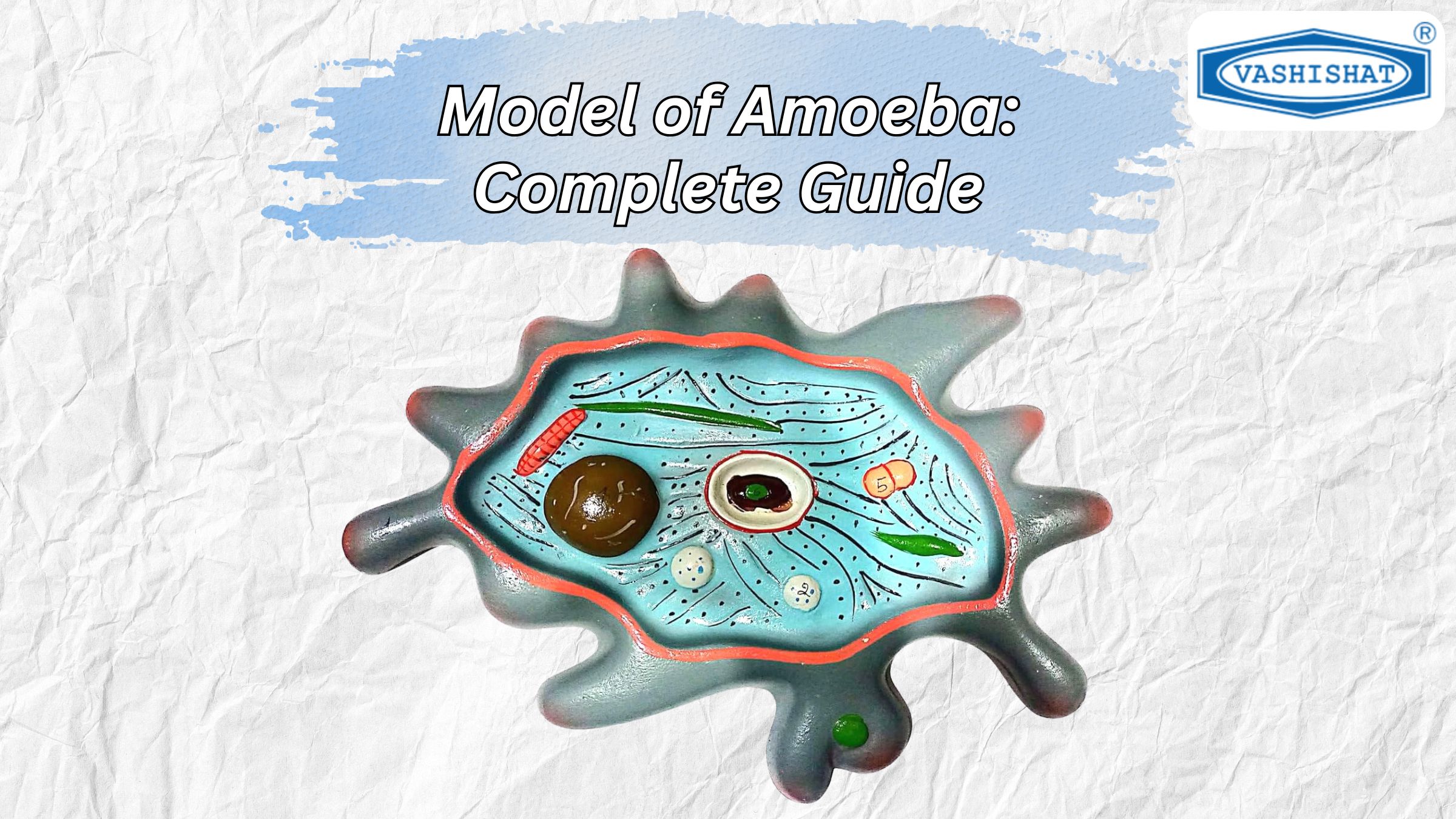
India's Leading Supplier Of Science Education Resources

The version of amoeba represents one of the most charming examples of single-celled lifestyles on Earth. This microscopic organism serves as a fundamental concern in biological training and research internationally. Understanding the model of amoeba affords crucial insights into cell biology, protist type, and evolutionary techniques. The structural complexity of the version of amoeba demonstrates how simple organisms can carry out complicated lifestyle functions. Scientists and educators rely on specific fashions of amoeba representations to educate cellular biology ideas correctly. Companies like Vashishat Scientific Corporation have advanced sophisticated laboratory fashions to beautify instructional expertise of these remarkable organisms.
The model of amoeba showcases a remarkably simple yet efficient mobile business enterprise. These single-celled protists belong to the kingdom Protista and represent primitive eukaryotic existence paperwork. The primary model of amoeba consists of 3 primary additives: the mobile membrane, cytoplasm, and nucleus.
The mobile membrane bureaucracy is the outer boundary of the model of amoeba, supplying protection and controlling molecular transport. This flexible membrane permits the organism to alternate shape constantly for the duration of motion and feeding strategies. The cytoplasm fills the indoors area and contains diverse organelles critical for mobile capabilities.
The cytoplasm inside the version of amoeba divides into distinct regions: ectoplasm and endoplasm. The ectoplasm forms the outer layer and looks clean and gel-like in consistency. This area gives structural guidance and allows pseudopodial formation all through motion.
The endoplasm occupies the inner location and consists of numerous organelles along with the nucleus, mitochondria, and various vacuoles. This granular location houses the organism's metabolic machinery and continues cell homeostasis. The version of amoeba demonstrates how these cytoplasmic areas work together to support lifestyle techniques.
The nucleus represents the control middle within the version of amoeba and contains the organism's genetic material. This round structure regulates cell sports and duplicate methods. The nuclear membrane surrounds the chromatin material and controls molecular change with the cytoplasm.
The model of amoeba normally shows an unmarried nucleus, although a few species may additionally incorporate multiple nuclei. The nucleus plays a crucial role during binary fission while the organism reproduces asexually. Advanced laboratory models from Vashishat Scientific Corporation accurately constitute those nuclear characteristics for academic purposes.
The model of amoeba is a famous particular locomotion thru pseudopodial formation, generally called amoeboid movement. These brief projections extend from the mobile frame and facilitate each movement and feeding sports. The pseudopodia represent "fake toes" that constantly alternate form and position.
The mechanism includes cytoplasmic streaming in which the cell contents flow into extending pseudopodia. The model of amoeba demonstrates how actin filaments and myosin proteins coordinate this movement procedure. This captivating locomotion method lets the organism navigate through diverse aquatic environments successfully.
Different species in the model of amoeba category exhibit diverse pseudopodial sorts. Lobopodia constitute wide, blunt extensions typically visible in Amoeba proteus. Filopodia appear as thin, finger-like projections that facilitate specific motion and feeding.
The model of amoeba can also show reticulopodia, which form community-like structures for taking pictures of prey. These specialized extensions show the organism's brilliant adaptability to unique environmental conditions. Educational fashions correctly constitute those versions to beautify pupil expertise.
The model of amoeba demonstrates state-of-the-art feeding conduct through phagocytosis and pinocytosis processes. During phagocytosis, the organism engulfs stable meals debris with the aid of surrounding them with pseudopodia. This technique forms meal vacuoles where digestion occurs.
Pinocytosis entails the uptake of liquid substances via small vesicle formation. The version of amoeba shows how these feeding mechanisms guide the organism's dietary requirements. Digestive enzymes damage down ingested substances, and waste merchandise are expelled through the cellular membrane.
The model of amoeba more often than not reproduces through binary fission, an asexual reproduction technique. This technique starts off evolving with nuclear division observed by cytoplasmic separation. The figure cell divides into the same daughter cells, each containing complete genetic information.
The duplicate cycle inside the model of amoeba typically takes place below favorable environmental situations. The complete process takes approximately one hour and affects exponential population growth. This efficient reproduction method contributes to the organism's ecological success in numerous habitats.
Binary fission inside the version of amoeba follows a specific series of occasions. The nucleus elongates and divides thru mitosis, ensuring the same genetic distribution. The cytoplasm then constricts and separates, creating independent organisms.
The model of amoeba demonstrates how this process keeps genetic continuity across generations. Each daughter mobile inherits equal traits from the parent organism. This duplicate method permits speedy population growth underneath suitable environmental conditions.
The model of amoeba responds to diverse environmental stimuli such as temperature, pH, and nutrient availability. Optimal conditions promote lively motion, feeding, and replica sports. Adverse situations may additionally trigger cyst formation for survival.
Temperature modifications significantly affect the version of amoeba metabolism and activity stages. These organisms decide on mild temperatures among 20-25°C for most appropriate characteristics. PH versions can have an impact on membrane stability and enzyme activity inside the cellular surroundings.
In conclusion, the model of amoeba represents a brilliant instance of cellular agency and function in single-celled organisms. These protists show how simple systems can help complicated life approaches along with motion, feeding, and duplication. The study of versions of amoeba provides treasured insights into evolutionary biology and cell mechanisms. Educational establishments worldwide make use of sophisticated laboratory fashions to enhance pupil know-how of these captivating organisms. Companies like Vashishat Scientific Corporation hold growing progressive academic tools to aid organic training. The model of amoeba remains an essential problem for know-how fundamental principles of life and cellular biology.